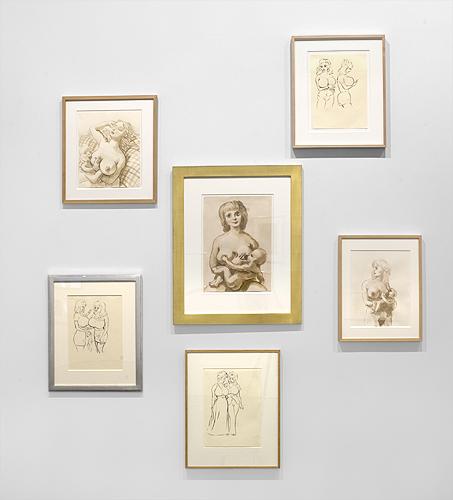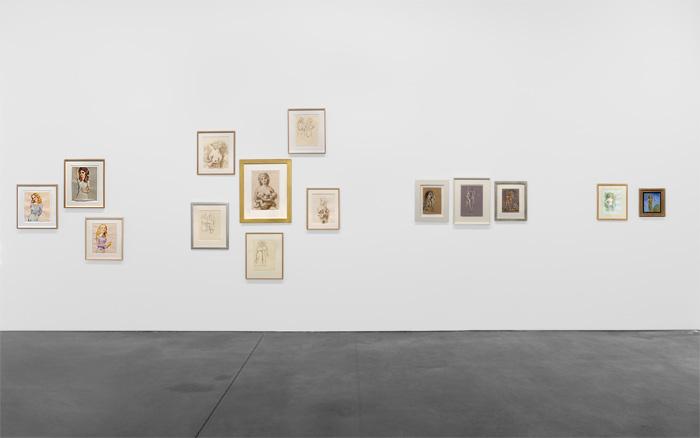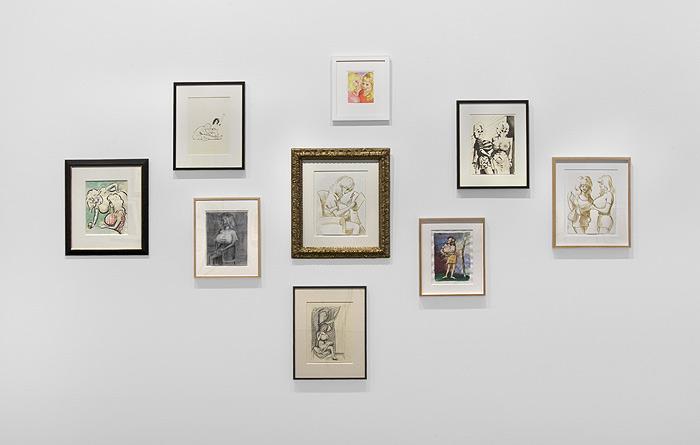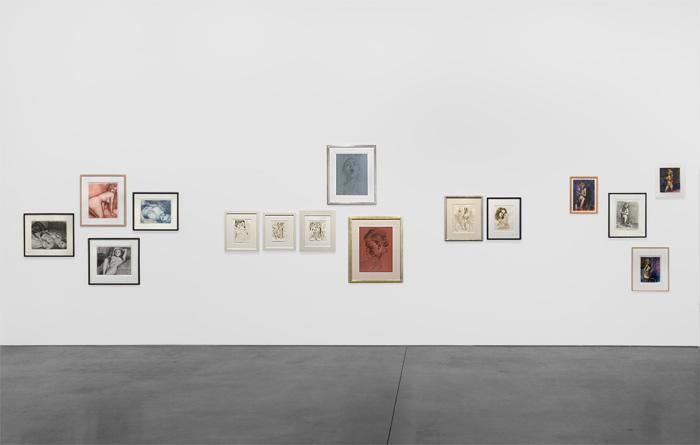John Currin
Works on PaperA Fifteen Year Survey of Women
June 19 – August 21, 2009
Main Gallery
Please note our summer hours:
Monday - Friday
10 a.m. - 6 p.m.
With a checklist of 77 works from over 50 individual and institutional lenders, Andrea Rosen Gallery is delighted to present the most comprehensive exhibition of John Currin's works on paper to date, giving the viewer an opportunity to experience his mastery of an extraordinary breadth of style and technique.
Carefully selected from every work on paper in Currin's oeuvre, this exhibition is both an extensive overview of the artist's complex use of the genre as well as an in-depth study of the artist's engagement with the female body as subject, object, and formal foil within his practice.
While the exhibition represents every period of Currin's works on paper, it is by narrowing the focus to what clearly emerges as his principle subject that we hope to unveil how the artist's depiction of women throughout his work is a strategy he employs to blur and even confuse subject matter and form. As the most traditional of subjects, one would anticipate that the female body would become the most banal of images; however, it remains continually distracting in its physicality, compelling as the perfect metaphor, and hauntingly mysterious in its assumed knowability. Currin is interested in how a viewer's attention can be consumed by subject matter. Like his paintings, it is often assumed that the strong visceral response to Currin's works on paper is triggered by the imagery, however, Currin and his work strongly argue that even more than images it is the powerful influence of form and style and technique that generates an emotional viewing experience. As we have become more obsessed with receiving information through images, we have become less aware of our visceral response to form. This exhibition is not only a survey of women, depicted over 15 years by Currin, but also an opportunity to survey the emotional and psychological landscape mapped out in the vagaries of line and material, of composition and structure.
What is so rich and important about Currin's works on paper is that they are significant both as an autonomous body of work as well as essential and critical to the invention of the paintings and the development of ideas. We purposefully chose the period between 1992 and 2003 because it represents the most active part of Currin's drawing practice. It is not by chance that after 2003 Currin only released three works on paper; since around 2001 he began to utilize digital imaging tools as a way of developing non-art source material. Until then, along with references from magazines, works on paper were always the first step in developing bodies of work and the artist's means for exploring new directions in content, imagery, and form. These creative phases yielded not only new ideas but also complex and thorough bodies of works on paper. While the use and methodology of the process of drawing has an even broader use in the studio, every work on paper released into the world (and therefore every example in this exhibition) is intended as a work of art. When Currin decided to make a drawing versus a sketch there was always a dual consciousness of working process and formal resolution. An interesting illustration of this is the entry in Currin's most recent monograph, published by Rizzoli, of one of his most famous paintings, "Heartless," 1997. Next to the painting, the artist included two images: one a non-work, a sketch from 2002 depicting a figure with a hole through her head and the other, "Untitled," 1997, a delicately rendered and fully resolved sepia ink drawing which Currin considers an independent artwork. It is also interesting to note that this drawing is one of only around seven in the exhibition that could be considered an actual study for a painting. Since, as the exhibition reveals, while they are certainly recognizable as Currin in every way and relate to the paintings, the works on paper retain their own significant territory and are very rarely direct prototypes. Much more so than his paintings, Currin's works on paper are often vehicles for purposeful extremes, from the most beautiful line to the rawest.
As well as experiencing the works, the exhibition allows viewers to become privy to the timeline of ideas and what Currin chose to pursue in his paintings. It is interesting to see which subject matters and formal techniques are prevalent over time. One powerful example to think about is the large balloon-breast paintings like "Jaunty & Mame," 1997 or "The Bra Shop," 1997 of which, while extremely central to Currin's work, there are only five paintings that fall into this category; yet, this exhibition shows that he started making drawings in this vein as early as 1987 and have remained prevalent in his drawing practice until 1998, existing in almost every medium: charcoal, ink, pencil, gouache, watercolor, and sepia toned ink. Another example of an equally prevalent figure in the works on paper is what could be referred to as the hobo. While there are only two hobo paintings in Currin's oeuvre, "The Hobo," 1999 and "Sno-bo," 1999, this show includes a dozen variations on paper from the highly refined to the purposefully deformed. The rawness of the works on paper unveils some of the more aggressively grotesque elements (sharp elbows, distended bellies, sagging breasts) in the exquisitely rendered paintings. Walking around the room, each of the 17 groupings adds another piece to a deeper understanding, each with its own function. Some explore the use of a single stylistic strategy. For instance, one group of nine works representing a four year period between 1998 and 2001 that while quite varied in both subject and form, show a technical use of transparency and cross-hatching that both embellishes and distorts. There are a number of instances where one group helps inform another, in this case, the distortion of the image creates a link to a number of other groups like the selection of works where the figure is blatantly obscured by dots. Another group shows that even when focusing on a single work, like the group of drawings related to "Thanksgiving," 2003, Currin explores levels of detail and completely different mediums. There are also groups, like the four drawings all from 1994, "The Living Room," "The Motel Room," and two titled "The Alcohol Place," that possess a dark, Neue Sachlichkeit-quality that does not exist anywhere else in Currin's work either stylistically or in relation to subject. These groups help emphasize what the artist chose not to explore in painting but also provides an opportunity to acknowledge how beautiful Currin's drawings are in their own right.
We hope that by presenting an extensive selection of works that the exhibition would be most illuminating to Currin's practice. Ultimately, it is the generosity of Currin's work which stands out so prominently.
For additional information and images, please contact Renee Reyes: r.reyes@rosengallery.com







